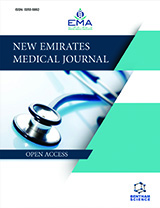Abstract
Introduction: Valvular heart diseases are some of the most common causes of cardiovascular morbidity and mortality worldwide. The mitral valve is estimated to be the cause of 15% of deaths in heart valve disease. Mitral valve dysfunction can be treated with a variety of operative options, one of which is mitral valve replacement. Although it is less desirable than repair, in some situations, it is the only viable option. Thus, we conducted this systematic review to help guide future risk assessment for mitral valve replacement patients and help in the construction of pre-operative risk assessment tools.
Methods: This is a systematic review of original articles discussing the topic of predictors of mortality for patients undergoing mitral valve replacement surgery. A systematic search was conducted via independent researchers across a number of databases, starting with PubMed databases utilizing its MeSH database, followed by a complementary search through Google Scholar.
Results: In total, 27 original articles were included in a collective cohort of 145005 patients. Older age was the most commonly cited variable as a mortality predictor, followed by decreased left ventricular ejection fraction. EuroSCORE is a well-known scoring system that predicts in-hospital mortality following major cardiac surgeries. It was found that it overestimated mortality greatly, while another study found that the revised EuroSCORE II system was a better predictor of mortality. Overall, we note that both versions usually overestimate mortality.
Conclusion: There seems to be an overall agreement over several factors, including older age, decreased ejection fraction, and the expertise of the surgeon and the institution on being clear predictors of postoperative mortality. There is also an obvious need for new tools to better predict mortality rates preoperatively, as the currently used scores often result in greatly inaccurate predictions.
New Emirates Medical Journal
Title:Predictors of Mortality Following Mitral Valve Replacement: A Systematic Review
Volume: 5
Author(s): Husam Abuawad, Mohammad AlShatnawi*, Rzan Shawashreh, Maya Attarakih, Mahmoud AlHarbi, Eman AlShebli, Husam Twaissi and Mohammad Sunoqrot
Affiliation:
- Emergency Department, Jordan University of Science and Technology, Irbid, Jordan
Abstract:
Introduction: Valvular heart diseases are some of the most common causes of cardiovascular morbidity and mortality worldwide. The mitral valve is estimated to be the cause of 15% of deaths in heart valve disease. Mitral valve dysfunction can be treated with a variety of operative options, one of which is mitral valve replacement. Although it is less desirable than repair, in some situations, it is the only viable option. Thus, we conducted this systematic review to help guide future risk assessment for mitral valve replacement patients and help in the construction of pre-operative risk assessment tools.
Methods: This is a systematic review of original articles discussing the topic of predictors of mortality for patients undergoing mitral valve replacement surgery. A systematic search was conducted via independent researchers across a number of databases, starting with PubMed databases utilizing its MeSH database, followed by a complementary search through Google Scholar.
Results: In total, 27 original articles were included in a collective cohort of 145005 patients. Older age was the most commonly cited variable as a mortality predictor, followed by decreased left ventricular ejection fraction. EuroSCORE is a well-known scoring system that predicts in-hospital mortality following major cardiac surgeries. It was found that it overestimated mortality greatly, while another study found that the revised EuroSCORE II system was a better predictor of mortality. Overall, we note that both versions usually overestimate mortality.
Conclusion: There seems to be an overall agreement over several factors, including older age, decreased ejection fraction, and the expertise of the surgeon and the institution on being clear predictors of postoperative mortality. There is also an obvious need for new tools to better predict mortality rates preoperatively, as the currently used scores often result in greatly inaccurate predictions.
Export Options
About this article
Cite this article as:
Abuawad Husam, AlShatnawi Mohammad*, Shawashreh Rzan, Attarakih Maya, AlHarbi Mahmoud, AlShebli Eman, Twaissi Husam and Sunoqrot Mohammad, Predictors of Mortality Following Mitral Valve Replacement: A Systematic Review, New Emirates Medical Journal 2024; 5 : e02506882312599 . https://dx.doi.org/10.2174/0102506882312599240708105339
| DOI https://dx.doi.org/10.2174/0102506882312599240708105339 |
Print ISSN 0250-6882 |
| Publisher Name Bentham Science Publisher |
Online ISSN 0250-6882 |

- Author Guidelines
- Bentham Author Support Services (BASS)
- Graphical Abstracts
- Fabricating and Stating False Information
- Research Misconduct
- Post Publication Discussions and Corrections
- Publishing Ethics and Rectitude
- Increase Visibility of Your Article
- Archiving Policies
- Peer Review Workflow
- Order Your Article Before Print
- Promote Your Article
- Manuscript Transfer Facility
- Editorial Policies
- Allegations from Whistleblowers




























